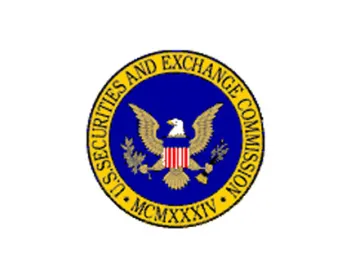For private fund managers, the valuation of privately-held securities has been subject to heightened regulatory scrutiny. As the IPO on-ramp for private “unicorn” investments has lengthened, fund managers may hold illiquid investments for longer-than-expected time periods—and valuation-related risks increase as the time lengthens between purchase and exit. This is the second of two blog posts regarding valuation issues; part one addressed regulatory and litigation concerns regarding valuation of traded securities. This post addresses valuation of private equity portfolio companies.
For private fund advisers that are registered with the SEC, valuation will always be a key component of any exam, and disclosures about valuation to current and prospective LPs are always a key point of inquiry. Over the past year, the SEC has requested information from mutual fund companies about how they value private technology companies, looking for discrepancies. We’ve previously noted that although regulators may not challenge a fund’s valuations as wrong per se, they tend to focus on issues “around” valuation practices:
-
Absence of adequate controls/policies/procedures
-
Failure to adhere in practice to stated valuation policies
-
Incomplete statements to auditors regarding assumptions & process
-
Disclosures to investors regarding valuation policies
Problems typically arise when a fund fails to follow its disclosed valuation policies to the letter, turning internal control issues into disclosure issues or potential violations of the anti-fraud provisions.
Private litigation involving portfolio company valuations and projections also has the potential to affect funds and advisers. For example, investors or employees may purchase company stock based on overly optimistic valuations, only to discover that shares are later worth much less. They may look to the fund as a deep pocket.
Can a fund simply hold investments at cost? Over time, fair value will deviate from initial cost, because fair value is generally focused on the anticipated “exit price” as of the measurement date. A cost approach may have been typical in the past (and might seem conservative in a rising market), yet that approach is generally considered to be inconsistent with fair value. For example, the Private Equity Industry Guidelines Group (PEIGG) guidelines note that use of cost basis or the value of the latest financing round, without taking into account changed circumstances, “is incompatible with” the concept of fair value.
In our view, regulators may be concerned if they see cost-based valuations, especially if they remain the same from period to period, without taking into account changing economic conditions.
Can valuations track the last round of funding? Even if the round is not a so-called “down round,” the headline per-share valuation may not reflect fair value if the deal includes certain structured terms that only benefit later investors. For example, a recent round could include preferences such as guaranteed IPO returns backed by ratchet mechanisms, vetoes, or liquidity rights. These structured transactions (called “dirty term sheets” by some), involve hidden terms that add complexity at the expense of prior investors, regardless of the calculated value per share.
According to the PEIGG guidelines, valuation methodology should start with an estimate of the value of the portfolio company as a whole as an initial step, then determine how the enterprise value is distributed among different classes of securities within the capital structure. If later terms give preferences, a discount for pre-existing share classes may be appropriate.
Should a manager follow outside firms’ valuations? Ignoring these outside valuations is risky, and most relevant guidance indicates these should, at a minimum, be considered. For example, as reported in the Wall Street Journal various mutual funds last year marked down their valuations of private tech startup companies. One could argue that these public valuations are observable inputs that should be incorporated into any analysis. If conflicting external valuations exist, especially if those valuations are public, it would be wise to document the rationale behind choosing a different valuation.
Internal valuation discrepancies. For example, Section 409A valuations. When private companies want to issue stock or options to employees, under Section 409A of the Internal Revenue Code, they need an independent, third-party valuation of those shares. The New York Times recently noted that it is a “dirty secret” that these valuations are often very precise yet have little practical value. They allow a private company to issue shares to employees at a cost that is much lower than the price that preferred shares are sold to outside investors. Although common stock is obviously different from preferred, a concern is whether inputs and assumptions are consistently applied across different valuations.
Another data point: Based on recent statements by senior staff from the SEC’s San Francisco Regional Office, the SEC will continue to focus on privately-held companies over the next year. In the near future we may see a case against a pre-IPO issuer relating to Rule 701 under the Securities Act. That rule requires disclosure of detailed financial information to employees or consultants in connection with certain stock or option grants. If so, there may be a spillover effect for funds that have invested in those companies or have board representation.
Conclusion. As the IPO on-ramp has appeared to speed up in 2017, there will be winners but also companies left behind. Valuation is an area where risk typically increases in times of market disruption. As SEC senior officials have noted, the enforcement division looks closely at valuation and asset impairment in times of economic turmoil, when managers might look to enhance performance using valuation adjustments and subjective discretion. In this environment, fund advisers can reduce risk by following robust and documented valuation procedures.





 />i
/>i

